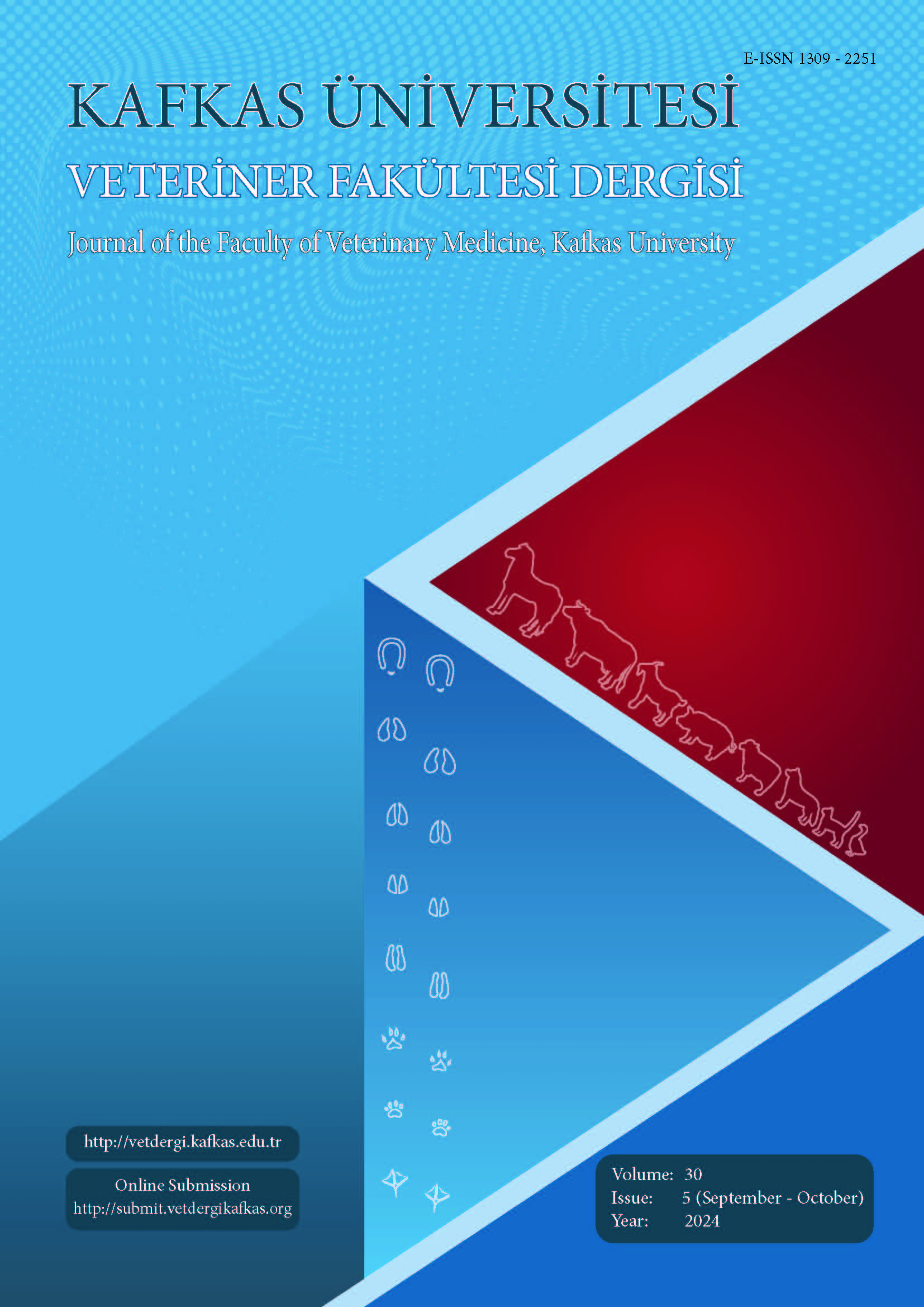Kafkas Üniversitesi Veteriner Fakültesi Dergisi
2024 , Vol 30 , Sayı 5
Impact of Early Qualitative Feed Restriction and the Provision of Barrier Perch on Morphometric and Biomechanical Measurements of Bones in Broiler Chickens
1Aydın Adnan Menderes University, Faculty of Veterinary Medicine, Department of Animal Science, TR-09020 Aydın - TÜRKİYE2Aydın Adnan Menderes University, Faculty of Veterinary Medicine, Department of Anatomy, TR-09020 Aydın - TÜRKİYE
3Aydın Adnan Menderes University, Faculty of Veterinary Medicine, Department of Animal Nutrition and Nutritional Diseases, TR-09020 Aydın - TÜRKİYE DOI : 10.9775/kvfd.2024.32099 An experiment investigated the effects of early qualitative feed restriction and barrier perch provision on the morphometric and biomechanical measurements of the bones in broiler chickens. A total of 504 one-day-old Ross 308 male broiler chickens were randomly assigned to a completely randomized design with a 2×2 factorial arrangement (three replicate pens/group;42 chickens/pen) of qualitative feed restriction (presence- QFR+/absence-QFR-) and the provision of barrier perch (presence-BP+/absence-BP-). On days 21 and 42, morphometric and biomechanical parameters were measured. As a result of this study, barrier perch presence showed no significant impact on morphometric and biomechanical measurements. In the QFR- group, the weight and length of femur bones in 42-day-old broiler chickens were found to be higher (P<0.0001, P=0.034, respectively), alongside increased weight (P=0.001), inner (mediolateral P=0.002 and craniocaudal P=0.040) and outer (mediolateral P=0.047) diameter of the tibiotarsus bones. Furthermore, weight-length index values of the femur and tibiotarsus bones were higher (P=0.001, P<0.0001, respectively) in the QFR- group, while robusticity index values were lower (P=0.029, P=0.006, respectively) on the 42nd day. Regarding biomechanical parameters, the ultimate force level of tibiotarsus bones was statistically higher (P=0.030) at 42 days in the QFR- group. In summary, early protein and energy restriction caused slight decreases in some measurements of the femur and tibiotarsus bones. Strong correlations were observed between specific morphometric and biomechanical parameters, demonstrating their potential to predict biomechanical measurements. Anahtar Kelimeler : Animal welfare, Barrier perch, Bone, Broiler chicken, Diluted diet, Threepoint bending











